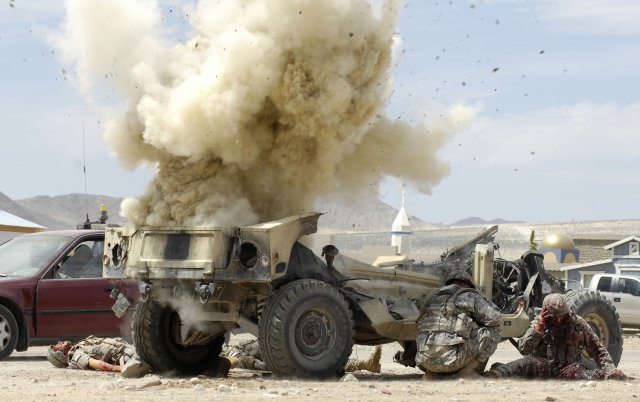Borrowing a technology used to improve the effectiveness of drugs, scientists are reporting discovery of a new explosive more powerful than the current state-of-the-art explosive used by the military, and just as safe for personnel to handle.
Their report appears in ACS’ journal Crystal Growth and Design.
Adam J. Matzger and colleagues explain that a technique for engineering medicines and other materials, termed cocrystallization, is attracting attention as a way to make improved explosives, rocket propellants and fireworks. Most solid materials consist of crystals – with atoms and molecules arranged in a specific pattern that repeats itself time and again.
Cocrystallization involves combining two materials into a new crystal architecture with the goal of producing an improved material.
They describe cocrystallization of the military’s standard explosive, HMX, with a powerful explosive called CL-20, which the authors say is too prone to accidental detonation for military use.
Mixing two parts CL-20 with one part HMX, however, produced a new explosive with a blast wave that would travel almost 225 miles per hour faster than that of the purest form of HMX, meaning a much more powerful blast.
The new explosive, however, was as stable and resistant to accidental detonation as HMX. They suggest that it has the potential to replace HMX as the new state-of-the art military explosive.
Source: American Chemical Society











